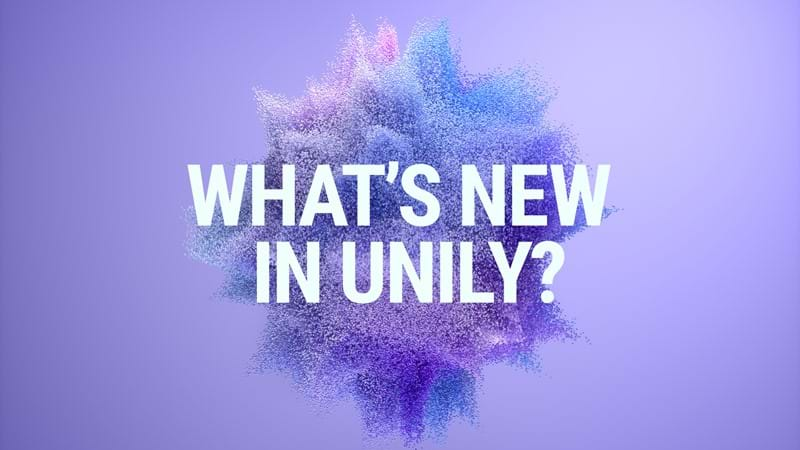7 trends HR leaders should know for 2022
Attracting, retaining, and nurturing top talent will be crucial for enterprise resilience in the coming decade, but creating world-class employee experience today looks very different to how it did yesterday. It’s time for HR leaders to throw out old rule books and adopt a fresh approach fit for the modern workplace with these seven trends front of mind.

The employee experience era has truly arrived
What began as an era of great disruption has now turned into a period of great innovation, with organizations on a global scale rising to the challenge of remote work backed by rapid digital acceleration. But within each business, behind each innovation, stands the teams and employees adapting and working hard to make this happen.
In the new climate, employee needs will take precedence over customer experience with the latest Edelman research finding that employees have overtaken customers as being the most important stakeholders for organizational long-term success. This significant shift predicates a growing focus on delivering world-class employee experiences, which puts HR under pressure to adapt their practices for a digital-first workplace.
Digital tools and emerging technologies present new opportunities for HR teams to confront many of the employee experience challenges they have wrestled with - promoting culture, connection, and community among increasingly dispersed workforces. So the coming years will see HR teams increasingly focused on leveraging technology to solve challenges old and new, creating digitally-enabled workplaces that meet the needs of the modern employee and sustain the evolution of the modern enterprise.
For Human Resources, 2022 will be a time to become more efficient and settled after the disruption of the past couple of years, while embracing the digital innovations set to redesign the employee experience. To successfully navigate through 2022, there are some particular employee experience trends that HR teams should pay attention to.
The 7 employee experience trends HR teams need to know
#1. Hiring and onboarding challenges become mission-critical
The shift to remote and hybrid working has advanced and been adopted by many organizations now as a standard, meaning HR teams have had to spend the last year adapting the hiring process accordingly. Now, thanks to an influx of job shuffling and business recalibration, HR teams will continue to grapple with remote hiring and onboarding challenges in the race to attract newly available talent and fill newly created roles.
While the last two years proved the success of remote working models, the same could not be said for remote onboarding. It's more difficult for new hires to get up to speed when they are hired remotely, so HR needs to be working with IT and internal communicators to create digital experiences and touchpoints that can ease them through the journey.
Leading enterprises will focus on embedding automated processes that standardize onboarding through the digital workplace and provide opportunities for new employees to connect with colleagues, absorb culture, and find information remotely with the same ease as if they were in a physical office. A positive onboarding experience is linked with an 82% improvement in employee retention, making this an important focus for the coming year.
Internal mobility presents a compelling solution to the hiring challenge
In response to the battle for talent, internal mobility is also on the rise with data from LinkedIn showing that promoting from within has risen by 20% since 2020. Increased engagement, lower costs, and a shorter hiring process are a few of the benefits of the shift to internal hiring, but the biggest benefit for organizations may be improved retention, according to LinkedIn. Capitalizing on already engaged employees offers enterprises a compelling solution to the hiring challenge, meaning that HR teams should be considering how they can promote internal mobility or risk losing their talent to the competition.
America's leading travel stop network, Love’s Travel Stops and Country Stores, is one organization already reaping the benefits of this approach. To combat high turnover common to retail enterprises, Love's created 'Love’s Ladder', a dedicated site within their intranet designed to spotlight employees that have grown their careers at Love’s, moving from frontline retail positions to senior corporate roles. To further emphasize the importance of this initiative, a feed is placed on the intranet homepage (where every employee starts their day) to pull through the latest promotions and remind employees of the opportunities available within the business.

#2. Building critical skills, and the rise of learning and development
Recent Gartner research found that nearly 60% of HR leaders have stated that building critical skills and competencies will be their number one priority in 2022. Data shows that nearly one in three skills that were needed for a job in 2018 will not be needed by 2022, meaning that continual learning and development is needed to build a resilient workforce capable of adapting to change.
Data has also shown that learning and development experiences influence employee retention, giving another incentive for HRs to put a bigger focus on this for 2022.
"Forward-thinking HR functions are closing development gaps and creating a more adaptable workforce by adopting a skills-centric approach to talent management."
In the hybrid workplace, the company intranet will become a core tool for driving L&D initiatives, providing a central location for employees to interact with training systems, resources, and knowledge exchange communities to support agile growth. Already we are seeing innovative companies capitalize on this opportunity to instill L&D into the company culture through integrations with the digital workplace.
#3. Progressing DEIB initiatives
2021 saw diversity, equity, inclusion, and belonging (DEIB) initiatives bought to the forefront and take prominence. This year the focus will be on ensuring these initiatives are embedded into the culture of the organization. HR teams need to make sure they are seen as more than just a box-ticking exercise – throughout 2022 they need to be not just sustained, but continually progressed.
Key to this progression will be employee listening. For a diversity and inclusion strategy to feel authentic, it must be based on the input of employees. This means HR teams will be looking at ways to create feedback loops and promote two-way dialogue across the organization. Digital tools will be a vital enabler, with social networking, surveys, polls, open communication channels, and employee apps all contributing to an inclusive culture where the employee voice is heard and valued.
#4. Revamping of employee perks and benefits
Now that hybrid working is a standard for many organizations, employers can no longer simply rely on office-based perks and benefits – for example, are commuter benefits or office meals still the most important perk? HRs need to be thinking outside of the box to offer employees benefits that are in line with new outlooks.
According to Harvard Business Review, 98% of organizations have said they will plan to newly offer or expand at least one employee benefit, with priority going towards employee-centric perks such as child care benefits, work flexibility, and expanded mental health support.
Putting greater emphasis on health and wellbeing – both physically and mentally – is something HR departments should be taking seriously in 2022, boosting resources and benefits to ensure employee burnout is not a frequent occurrence.
#5. Employee trust is a growing asset
Edelman’s latest Trust Barometer found that currently, employer trust is at a record high – but this doesn’t mean that organizations should take their foot off the brakes. Enterprises must increasingly be genuine about putting the employee at the center and cultivating a sense of trust through relationship building.
Understanding that leadership visibility and robust communications are key to establishing trust, HR leaders will be looking to strengthen relationships with both internal communications and leadership teams, educating where necessary on the value of trust for business performance. Open communication and transparency should form the basis of any strategy aiming to bolster employee trust, with digital-first tactics for promoting open dialogue taking center stage.
HR should be looking to leverage the digital workplace to both identify and listen to employee pain points, and to respond with transparent communications in kind. Two-way dialogue should be fostered and feedback mechanisms built into the fabric of the digital employee experience.
One example of a company excelling in this regard can be found in manufacturing enterprise Samuel, Son & Co, who are taking a radical, digital approach to embed a culture of transparency across their organization. By opening up previously closed leadership huddles to their entire workforce, and hosting recordings on their employee experience platform alongside ample opportunities for employees to leave feedback and contribute discussion topics, the enterprise has been able to usher in a new era of digitally enabled transparency that is transforming their previously hierarchical culture.

#6. The need for greater IT/HR collaboration
For 2022, HR and IT teams should be building on the operational cohesion established throughout the pandemic. HR can’t successfully engage employees or create a positive experience without technology, while IT tools can become redundant and meaningless if not designed with employee needs front of mind. Research by Gartner has shown that in the post-pandemic workplace, CIOs and IT teams are as responsible for culture change as HR.
The prominent role of technology in architecting the modern employee experience means that HR must become invested in digital transformation projects as a key stakeholder looking after the interests of employees from a human-centric standpoint. Digital employee experiences will become a primary indicator of employee satisfaction in the post-pandemic workplace, meaning HRs must start thinking about how they can better collaborate with the IT department to ensure that strategies are people-focused and not tech-led.
#7. The onslaught of change fatigue
Change has been a constant over the past couple of years, so it’s no surprise that in Gartner’s latest HR report, it was found that 54% of HR leaders said their employees are fatigued from change. This has a direct impact on team innovation, performance, burnout, and the overall employee’s intent to stay with their employer.
"Today’s average employee can absorb half as much change before becoming fatigued as they could manage in 2019."
There needs to be continued careful management of change communications from HR in the upcoming year, accounting for the small ripples of change in the organization as well as the big impact ones – all types of change will have an impact on employees.
Having an open and honest culture that creates a sense of belonging will assist in managing the impact of change fatigue. HR teams should be thinking about how they can cultivate this through digital platforms, ensuring the resources available are used appropriately and as effectively as possible.
Embrace the digital future with an employee experience platform
There are exciting opportunities ahead to embrace digital innovations and create better, smarter, more connected workplaces, but HR must take up the mantle as people-leaders protecting the interests of employees and ensuring that digital transformation is people-led.
The digital workplace will be the defacto workplace of the future and HR must ensure they are invested in its evolution and abreast of the opportunities it presents to advance employee experience and cultivate performant culture.
To find out how a dedicated employee experience platform can form the basis of your people-led digital workplace strategy - following in the footsteps of the world's largest, most innovative enterprises - get started with a free demo today. The future of employee experience is digital: don't get left behind.
-
On-demand

















